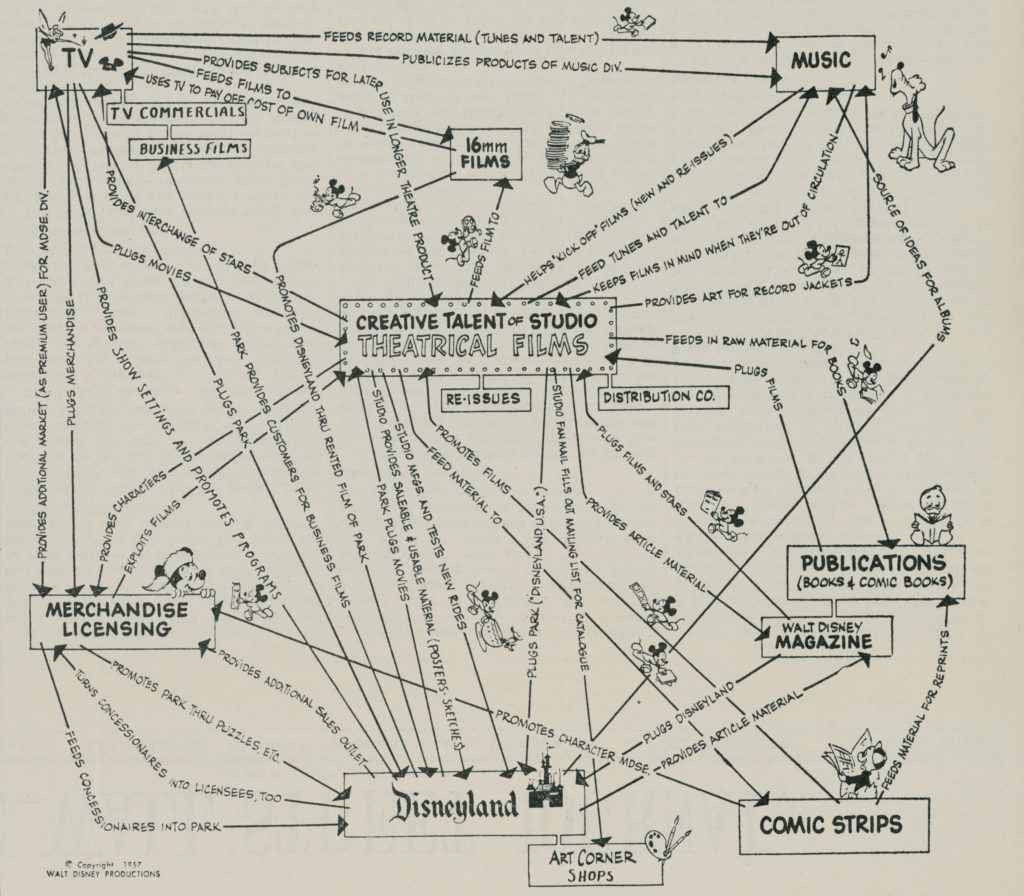Brand as a Service

Why don’t we have Brand as a Service companies? Over at Redef, there is an article about Disney as a Service. In the IT world, the “as a Service” concept isn’t new. Most know about Software as a Service (SaaS), a cloud-based web application having a monthly or yearly subscription fee. Think Salesforce or Basecamp.
FYI, I’m using product and service interchangeably.
In the 20th century, manufacturers and creators have been walled off from the end users. Industries have layers and layers of middlemen who are responsible for distribution and retailers getting the product into the hands of the buyers. This wall has created a supply chain that is problematic in many industries. Media brands have had content creators, distributors, and publishers (TV, radio, newspapers) or retailers (Best Buy, theaters).
As everyone knows, the Internet changed everything. Non-publisher media brands can now engage with customers with no middlemen. Why bother dealing with them now? Part of it is that a shift to directly interfacing with end users is daunting for several reasons:
- The brand becomes responsible for the whole stack of content creation, marketing, distribution, and post-sale engagement. The financial investment is significant.
- Such a change will not happen over time. All the partners in the supply chain will voice their concern since it has the potential of cutting into their revenues and they can threaten to boycott the brand. Financial pain for everyone.
- Even if the investment is possible, the organization structure of brands has to change. Companies optimize for what they are good at, creating content or creating a widget, and pushing the goods downstream. Corporate cultures will have to change, different types of talent will be required.
But transforming into a Brand as a Service is worth it. Control is lost with each extra layer between the brand and customer and increases the probability of chaos. The brand needs to connect directly with the consumer to provide the best possible customer experience.
The question is how does a brand decide if it wants to become a hub consumers will seek out, willingly pay for their products and services over and over? The most straightforward answer is that a brand must have more than 2 or 3 products that consumers will be interested in coming back for over and over.That’s where Walt Disney was a visionary. He envisioned a set of content and products that would feed, support, and reinforce each other.

Films are the core product, and they feed to create TV, music, and other publications. It is a portfolio of content that is connected and builds on each other.
Going back a few years, Disney becoming a stand-alone hub would be impossible without the Internet. Still today, such a transformation will be challenging, but it is finally possible for brands that have the connected portfolio of products to control their destiny.